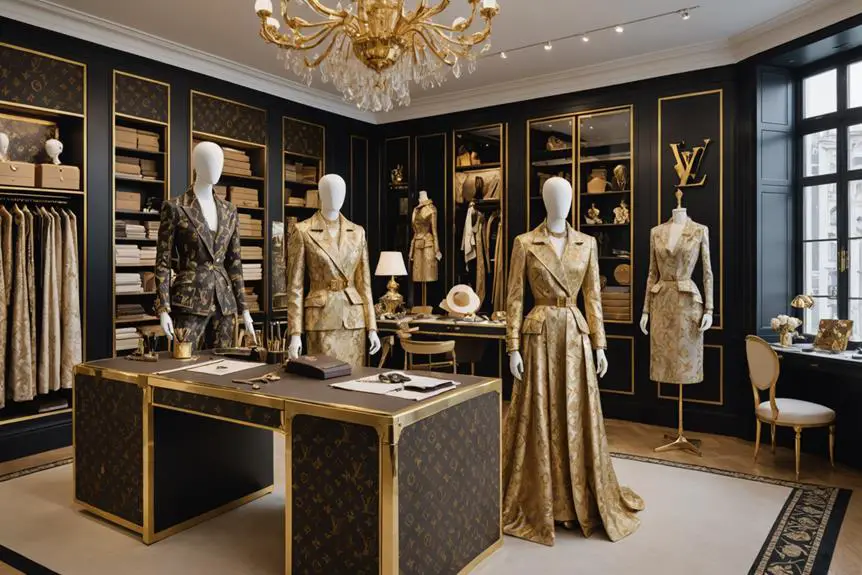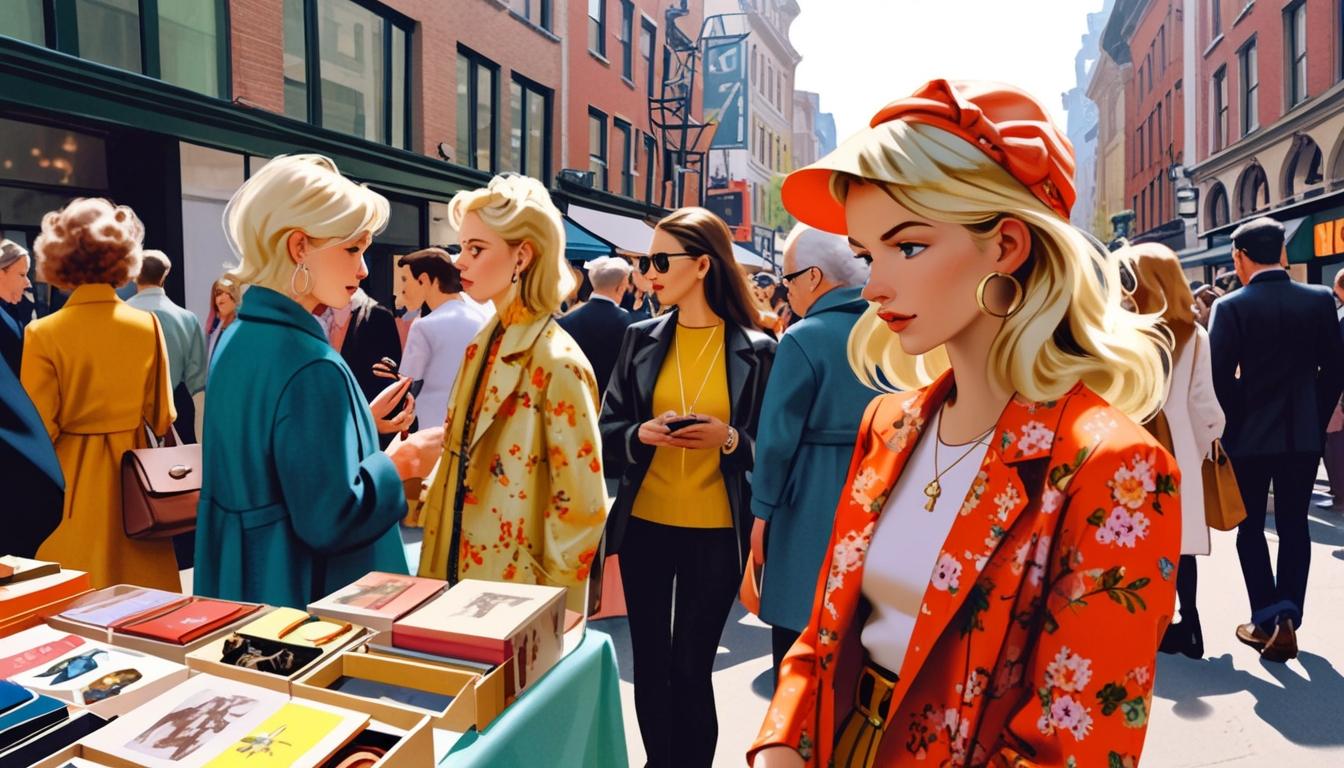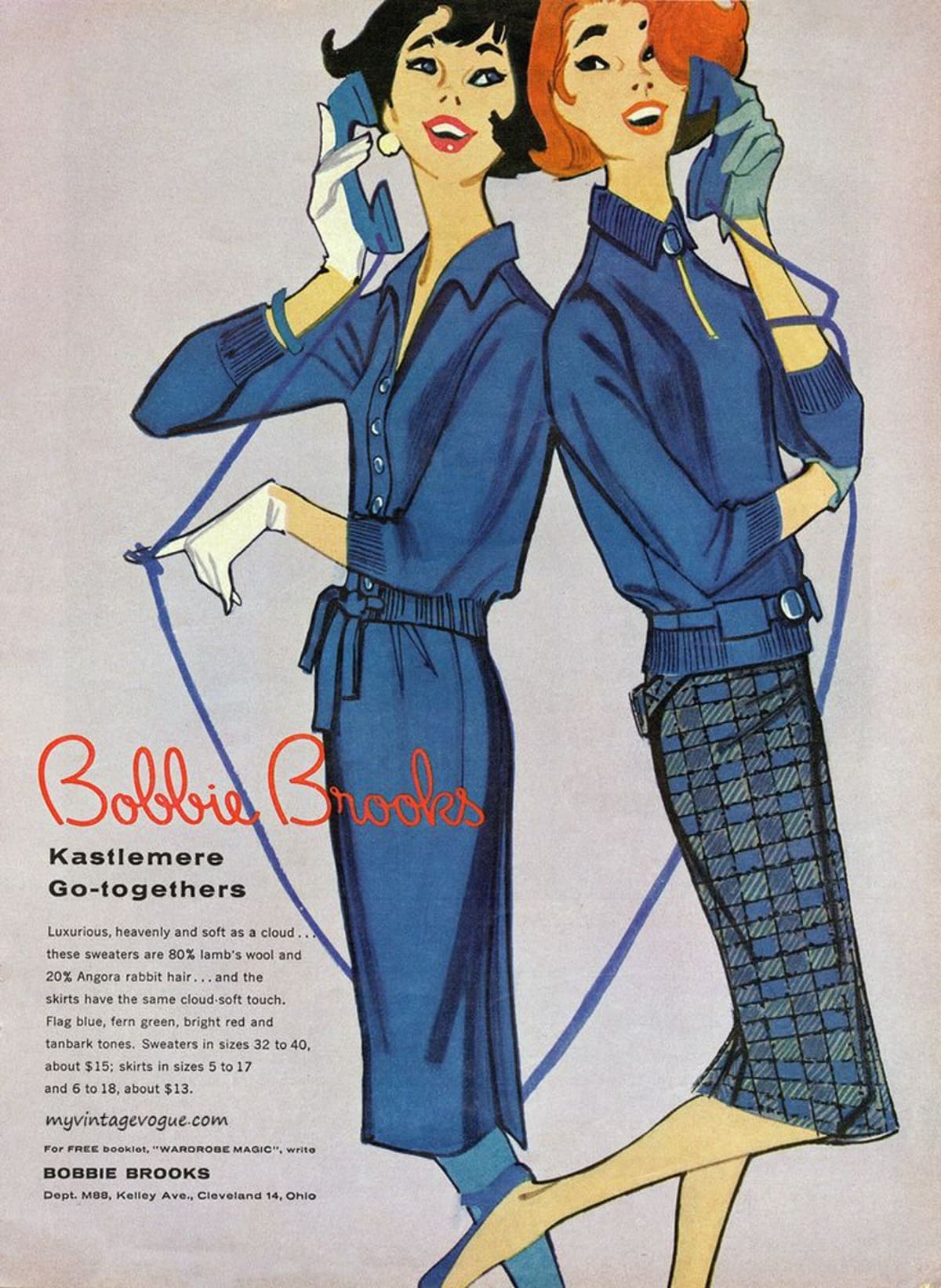The House of Louis Vuitton has a rich history of visionary designers who've transformed luxury fashion. Starting with Marc Jacobs, who expanded the brand's appeal in the late '90s, followed by Nicolas Ghesquière, known for mixing cultural references into modern designs. Kim Jones blended streetwear with high fashion, while Virgil Abloh brought a fresh perspective before his untimely passing. In 2023, Pharrell Williams took the reins, focusing on cultural significance. Each designer left a unique mark, shaping not only Louis Vuitton's identity but also the broader fashion landscape. Stick around, and you'll discover more about their innovative impacts and future directions!
Historical Overview
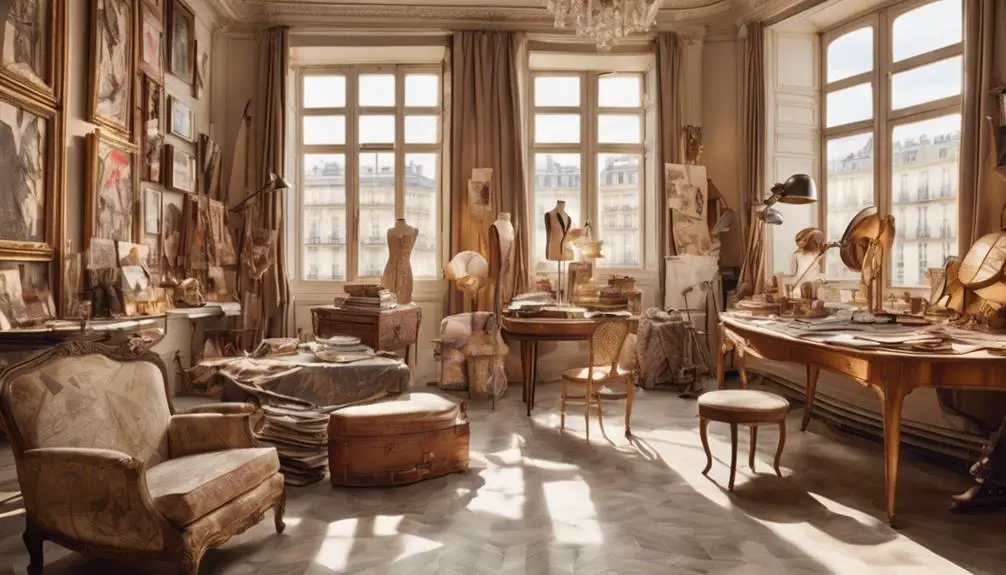
Founded in 1854, Louis Vuitton quickly became synonymous with luxury travel goods and trunk-making. The brand's journey began with innovative designs, like its first flat-topped trunk in 1858, which revolutionized how people traveled.
When Georges Vuitton took over, he introduced the iconic monogram canvas in 1896 to fight against counterfeiting, helping the brand gain international fame.
In 1987, Louis Vuitton merged with Moët Hennessy, creating LVMH, a significant turning point in its history. This merger set the stage for growth and innovation, leading to the appointment of Marc Jacobs as artistic director in 1997.
Under Jacobs, the fashion house modernized its image and expanded its offerings into ready-to-wear fashion, collaborating with various artists to create buzz and excitement.
The creative direction of Louis Vuitton continued to evolve with influential designers like Nicolas Ghesquière and Virgil Abloh. Each brought their unique vision to the brand, pushing boundaries and redefining luxury fashion.
Nicolas Ghesquière, known for his futuristic designs, infused the brand with a fresh aesthetic, while Virgil Abloh introduced streetwear culture, making luxury more accessible and relevant to younger audiences.
With each artistic director, Louis Vuitton has adapted to changing times while maintaining its core essence. The brand's rich history, marked by innovation and creativity, has solidified its status as a leading fashion house, enchanting fashion lovers around the world.
Key Designers and Contributions
Throughout its storied history, Louis Vuitton has been shaped by a remarkable array of key designers, each leaving an indelible mark on the brand.
Marc Jacobs was the first creative director, serving from 1997 to 2014. He greatly expanded the brand's ready-to-wear offerings and quadrupled profits during his tenure. His vision paved the way for future creative leaders.
In 2013, Nicolas Ghesquière took over as creative director, introducing innovative designs that integrated diverse cultural references and anime aesthetics. His fresh approach enhanced the brand's identity and appealed to a younger audience.
Meanwhile, Kim Jones, who directed menswear from 2011 to 2018, made waves by bringing streetwear into high fashion. Collaborating with brands like Supreme, he boosted the use of non-traditional fabrics in collections by 50%, bridging the gap between luxury and casual attire.
Following Jones, Virgil Abloh became the menswear artistic director in 2018. Known for his concept of "Maintainamorphosis," he skillfully fused classic styles with modern elements and vibrant colors until his passing in 2021. His creative direction resonated deeply within the fashion community.
In 2023, Pharrell Williams stepped into the role of menswear artistic director, debuting a collection that honors Black culture. His appointment continues the legacy of bold creative leadership at Louis Vuitton, ensuring that the brand remains at the forefront of fashion innovation.
Each designer has contributed uniquely, shaping Louis Vuitton into a powerhouse of creativity and style.
Signature Styles and Innovations
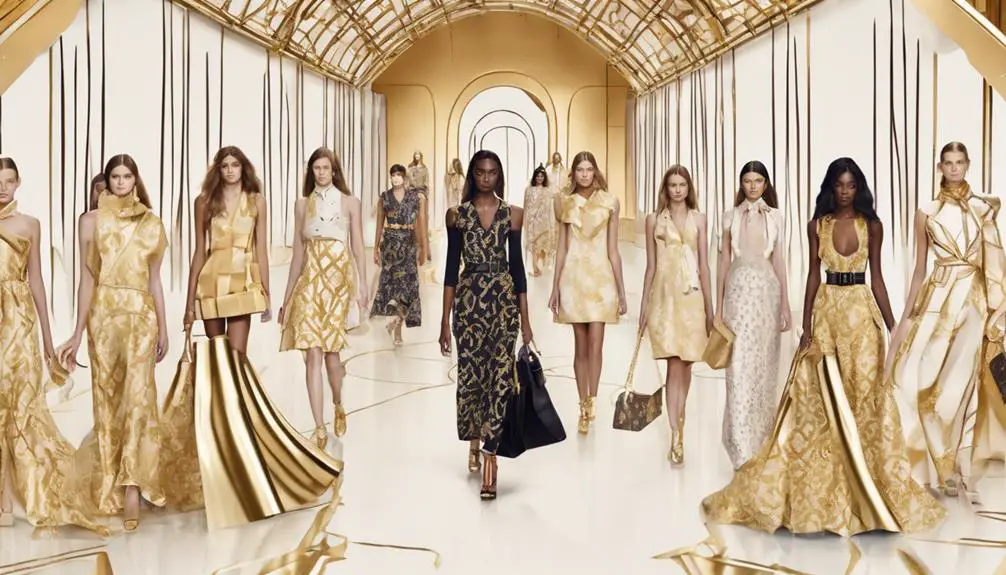
Louis Vuitton's signature styles and innovations reflect an enchanting blend of heritage and modernity that continues to evolve with each designer's vision. Under Nicolas Ghesquiére, the brand embraced Asian influences and anime aesthetics, creating innovative silhouettes that redefine the iconic label's identity. His designs add a cultural depth that resonates with a diverse audience, showcasing how fashion can bridge different worlds.
Virgil Abloh brought a new energy to Louis Vuitton, introducing the concept of "Maintainamorphosis." He merged classic elements with vibrant colors and luxury streetwear aesthetics, making the brand feel fresh and relevant. His work appealed to a younger demographic and showcased how high fashion could embrace street culture.
In 2023, Pharrell Williams debuted his collection, which paid tribute to Black culture while inserting his unique personal style into the mix. His innovative design approach utilized unconventional materials, pushing the boundaries of what luxury fashion can be. This creativity highlights how signature pieces, like the Petite Malle and LV Twist bags, can maintain extraordinary heritage while embracing modern luxury.
Additionally, Kim Jones played a vital role in blending streetwear with high fashion, collaborating with brands like Supreme. This integration markedly altered Louis Vuitton's demographic appeal, attracting fashion-forward individuals who appreciate both luxury and casual styles.
Together, these designers have shaped a vibrant tapestry of innovation at Louis Vuitton, ensuring that each piece you encounter tells a story of evolution and creativity.
Impact on Fashion Industry
The innovations brought by designers at Louis Vuitton have had a profound impact on the fashion industry, reshaping how luxury is perceived and consumed. With each creative director, from Marc Jacobs to Virgil Abloh, the brand has embraced contemporary aesthetics that challenge conventional norms. This evolution has expanded its offerings far beyond traditional leather goods, leading to a fresh wave of ready-to-wear collections.
Consider the influential moments that vividly illustrate this transformation:
- Collaborations with streetwear brands, like those under Kim Jones, that merged high fashion with street culture.
- Virgil Abloh's groundbreaking concepts, which emphasized inclusivity and cultural relevance, making luxury more accessible and diverse.
- The evolution of handbag designs, which set trends that resonate throughout the fashion industry, influencing competitors and elevating accessory standards.
As Louis Vuitton continues to push boundaries, it's clear that the brand's approach to luxury fashion has become a blueprint for others.
By bridging gaps between demographics and honoring cultural dialogues, these designers have made luxury not just about opulence but also about connection and relevance.
Pharrell Williams' recent collection, for instance, celebrates Black culture while perpetuating the brand's legacy of innovation.
Future Directions and Trends
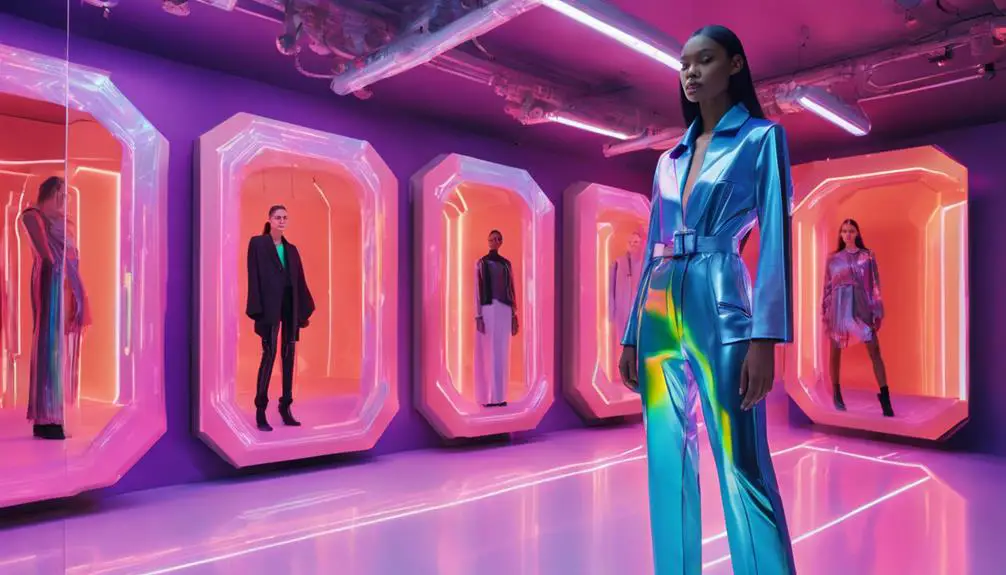
As Pharrell Williams takes the helm as menswear artistic director, you can expect a fresh wave of creativity that honors Black culture while showcasing individual style. Williams is set to infuse Louis Vuitton's collections with cultural significance, reflecting a commitment to diversity that resonates deeply in today's fashion landscape.
His approach is poised to redefine what luxury means, emphasizing personal expression and heritage. The fashion industry is also witnessing a resurgence of interest in vintage pieces, with collectors increasingly valuing unique items that tell a story, similar to vintage Gucci identification.
With a legacy of bold creative leadership behind him, the fashion world enthusiastically anticipates Williams' innovative direction. Future collections are likely to explore sustainable practices, aligning with the industry's growing trend toward eco-friendly fashion.
Imagine garments crafted from unconventional materials that not only look stunning but also promote environmental responsibility. In fact, 30% of authenticated handbags already utilized non-traditional fabrics in 2022, highlighting an exciting shift.
Expect Williams to push creative boundaries through new collaborations with artists and designers, expanding Louis Vuitton's narrative and product offerings. These partnerships can lead to unique designs that blend different cultures and aesthetics, sparking conversations around art and fashion.
As you follow this journey, keep an eye out for how Pharrell Williams' vision unfolds, embracing the spirit of innovation while staying grounded in cultural roots.
The future of Louis Vuitton under his guidance promises to be a vibrant tapestry of creativity, sustainability, and diverse influences that will leave a lasting impact on the fashion industry.
